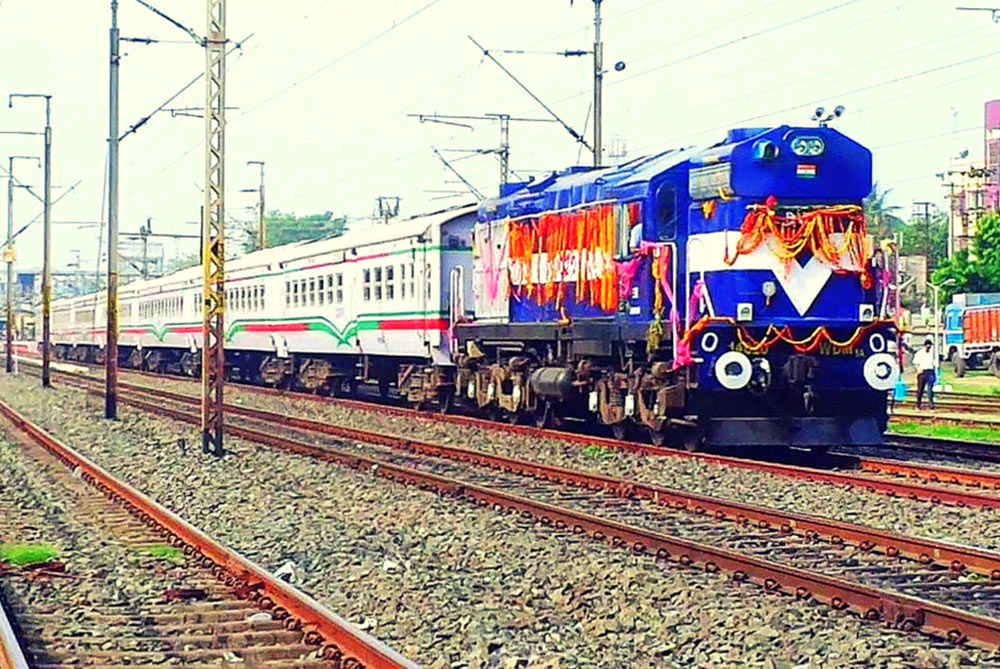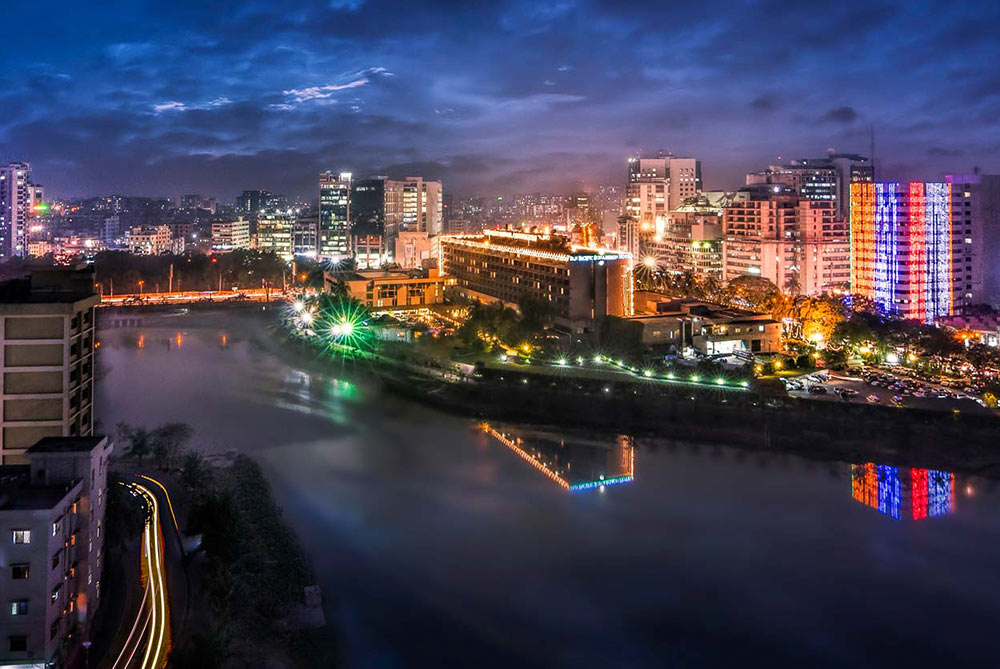By Hamlin Lovell, NordicInvestor
The Bengali Tiger
A microbrew beer made by Brooklyn’s Sixpoint Brewery is called Bengali Tiger. Craft brewing and Bangladesh (whose 160 million people mainly belong to the global community of 300 million or so Bengalis) are both impressive growth stories: a growth market and a “Tiger” economy.
Bangladesh has some similarities with another frontier market, Vietnam: both economies are growing around 6% per year, and have competitive labour costs. In common with the Philippines, remittances from those working overseas are important, making up 6% of Bangladesh’s GDP in 2016, according to the World Bank. Exports of textiles and clothing, are fuelling growth and a strong trade surplus. Bangladesh is forecast to become the world’s largest producer of RMG (ready-made garments) by 2019. The population is relatively young, with 57% aged under 25. The macroeconomic framework is stable, with an independent central bank and a fairly steady exchange rate for the Taka currency. The political system is somewhat less stable, with rivalry between the Awami League and the Bangladesh National Party, periodic purges, and some civil unrest, but this does not seem to cause problems for investors. English is the business language.
Bangladesh has some similarities with another frontier market, Vietnam: both economies are growing around 6% per year, and have competitive labour costs.
Bangladesh’s economy (GDP around $220 billion) and stock-market capitalisation (c.$50 billion) are the third largest in South Asia, after India and Pakistan.
The local stock-market contains over 500 listed companies, and pre-dates Bangladesh’s independence in 1971 (it started in 1954, when Bangladesh was East Pakistan). The market can be very volatile- and uncorrelated. It quadrupled in a matter of months in 2010, and then dropped 50% between 2010 and 2013. In 2018, the market has had a correction of about 15%.
Nordic companies (and Norway’s government, via Norfund) have been early movers in certain frontier markets including Bangladesh. Norfund was set up in 1997, when Norway’s Telenor also entered the Bangladesh telecoms. Telenor owns 55.8% of leading mobile operator, Grameenphone, which is locally listed on the Dhaka and Chittagong stock exchanges (ticker- GP). Other subsidiaries of multi-nationals listed on the Bangladesh stock-market include British American Tobacco Company Bangladesh Limited, Glaxo Smithkline Bangladesh Limited, Heidelberg Cement Bangladesh Limited, LafargeHolcim Bangladesh Limited, and Reckitt Benckiser Limited.
Private equity
Norfund has allocated to the Frontier fund: the first private equity fund dedicated to Bangladesh, set up in 2014, and run by a Bangladesh subsidiary of Sweden (and Scandinavia)’s largest hedge fund manager, Brummer and Partners. As of May 2018, Frontier has exposure to seven companies: supermarket Agora, battery maker RGL, garment maker Ananta, consumer electronics distributor Butterfly Marketing, generic drug maker Popular, motorcycle maker (and Volvo trucks distributor) Runner, and a Swedish firm – Saltside – which builds online marketplaces (along the lines of the Ebay business model) in countries including Bangladesh.
Nordic companies (and Norway’s government, via Norfund) have been early movers in certain frontier markets including Bangladesh. Norfund was set up in 1997, when Norway’s Telenor also entered the Bangladesh telecoms.
The LR Global Bangladesh Asset Management Company (affiliated with LR Investors of New York) is another local private equity manager, which has invested in the Bangladesh Power Generation Company.
ESG and Impact investing
Some factory safety issues (such as the Rana Plaza factory catastrophe in 2013) have shone the spotlight on ESG issues. The Frontier Fund adheres to the ESG standards of the World Bank’s International Finance Corporation (IFC).
Bangladesh has also pioneered one form of “Impact Investing”: microfinance, many years before the term “impact investing” became widely used.
The Global Impact Investing Network (GIIN) has identified at least 15 impact investors active in Bangladesh. They are investing in a range of industries: energy, manufacturing, financial services, and agro-processing. Much of the capital comes from DFIs (Development Finance Institutions).
Bangladesh has also pioneered one form of “Impact Investing”: microfinance, many years before the term “impact investing” became widely used. Bangladeshi social entrepreneur, Muhammed Yunus, won the Nobel Peace Prize for his work founding the Grameen Bank. The Microcredit Regulatory Authority licenses about 700 lenders, who have over 30 million clients. Interest rates have been capped at 27% annually. Microfinance is not without controversy however, and some lenders have been criticised for their practices.
Active funds
It is possible to invest directly into microfinance, or to get indirect exposure, through buying stock in a local bank, such as BRAC Bank. This share was recommended by Rashmi Kwatra, at the Next Wave Sohn section of the Sohn Investment Foundation conference held in New York in April 2018. Kwatra founded Sixteenth Street Capital, and featured in The Hedge Fund Journal’s 2017 “50 Leading Women in Hedge Funds” survey in association with EY.
BRAC is not only a play on microfinance but is also a leader in mobile payments, she pointed out. BRAC owns 51% of bKash, the biggest mobile financial service provider, and Alibaba Group’s Alipay has just bought 20% of bKash (other investors in bKash include Money in Motion, the International Finance Corporation, and the Bill and Melinda Gates foundation).
The country is under-banked, with only 30% of the population having a bank account.
Closed end funds, premiums and discounts
LR Global Bangladesh Asset Management Company also runs closed end funds investing mainly in public equity: the DBH First Mutual Fund, the Green Delta mutual fund, the MBL 1st Mutual Fund, the LR Global Bangladesh Mutual Fund One, and the NCCBL Mutual Fund-1. Bangladesh is the second largest Muslim nation (after Indonesia) and one of the LR funds follows “Shariah” principles: the AIBL 1st Islamic Mutual Fund. These vehicles are trading at discounts to NAV of between 20% and 30%. CEFs run by VIPB Asset Management also trade at discounts.
This was not always the case. Back in 2010, at the height of the bubble, some local CEFs rose to enormous premiums to NAV, of between 200% and 400%. For trading-oriented investors, the volatility of discounts and premiums could be an opportunity.
ETFs
Investors seeking a passive index-tracking vehicle could look at the Xtrackers MSCI Bangladesh Swap UCITS ETF 1C (USD) ETF (ticker – XBAN). The index sector breakdown is 31.91% financials and 26.97% healthcare with the rest in materials, telecoms, consumer staples, energy, utilities, industrials, and consumer discretionary. The factsheet puts the market on a PE ratio of 12.78 with a dividend yield of 3.38%.
This product has a range of charges. The headline figure for ongoing charges, is 0.85%, comprised of a 0.65% management company fee and a 0.20% fund fixed fee. This is already relatively high for an ETF, but there is also an OTC swap transaction fee of 1.7%, according to the DWS website. Taken together, this adds up to an estimated tracking difference (ETD) of 2.55%. Once the swap fee is factored in, the total costs are higher than for some actively managed products. This may reflect a scarcity premium – as far as we know, XBAN is the only ETF offering a pure play on Bangladesh.
A broader frontier markets product could also have some small exposure to Bangladesh. The iShares MSCI Frontier 100 ETF (ticker – FM), and the Columbia Beyond BRICS ETF, each has around 5% in Bangladesh – but countries such as Argentina, Kuwait, Vietnam and Morocco are much larger weighting in frontier market indices.





